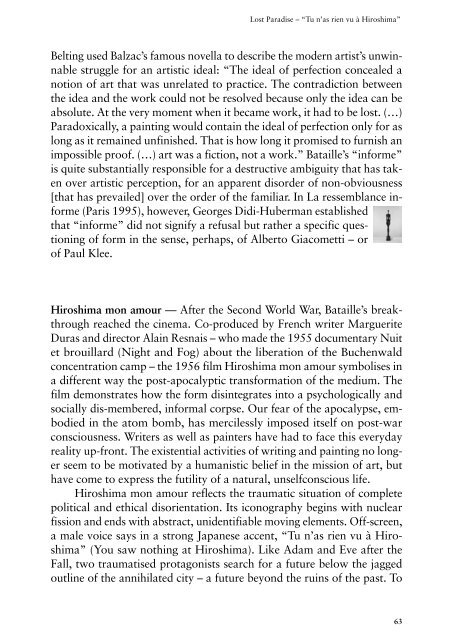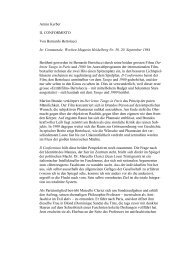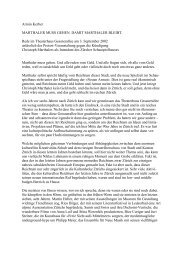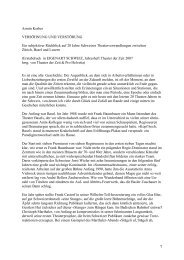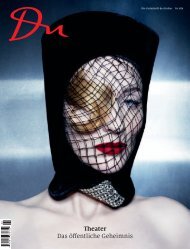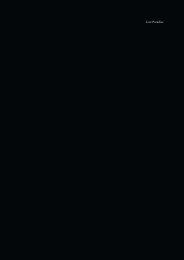You also want an ePaper? Increase the reach of your titles
YUMPU automatically turns print PDFs into web optimized ePapers that Google loves.
<strong>Lost</strong> <strong>Paradise</strong> – “Tu n’as rien vu à Hiroshima”<br />
Belting used Balzac’s famous novella to describe the modern artist’s unwinnable<br />
struggle for an artistic ideal: “The ideal of perfection concealed a<br />
notion of art that was unrelated to practice. The contradiction between<br />
the idea and the work could not be resolved because only the idea can be<br />
absolute. At the very moment when it became work, it had to be lost. (…)<br />
Paradoxically, a painting would contain the ideal of perfection only for as<br />
long as it remained unfinished. That is how long it promised to furnish an<br />
impossible proof. (…) art was a fiction, not a work.” Bataille’s “informe”<br />
is quite substantially responsible for a destructive ambiguity that has taken<br />
over artistic perception, for an apparent disorder of non-obviousness<br />
[that has prevailed] over the order of the familiar. In La ressemblance informe<br />
(Paris 1995), however, Georges Didi-Huberman established<br />
that “informe” did not signify a refusal but rather a specific questioning<br />
of form in the sense, perhaps, of Alberto Giacometti – or<br />
of Paul Klee.<br />
Hiroshima mon amour — After the Second World War, Bataille’s breakthrough<br />
reached the cinema. Co-produced by French writer Marguerite<br />
Duras and director Alain Resnais – who made the 1955 documentary Nuit<br />
et brouillard (Night and Fog) about the liberation of the Buchenwald<br />
concentration camp – the 1956 film Hiroshima mon amour symbolises in<br />
a different way the post-apocalyptic transformation of the medium. The<br />
film demonstrates how the form disintegrates into a psychologically and<br />
socially dis-membered, informal corpse. Our fear of the apocalypse, embodied<br />
in the atom bomb, has mercilessly imposed itself on post-war<br />
consciousness. Writers as well as painters have had to face this everyday<br />
reality up-front. The existential activities of writing and painting no longer<br />
seem to be motivated by a humanistic belief in the mission of art, but<br />
have come to express the futility of a natural, unselfconscious life.<br />
Hiroshima mon amour reflects the traumatic situation of complete<br />
political and ethical disorientation. Its iconography begins with nuclear<br />
fission and ends with abstract, unidentifiable moving elements. Off-screen,<br />
a male voice says in a strong Japanese accent, “Tu n’as rien vu à Hiroshima”<br />
(You saw nothing at Hiroshima). Like Adam and Eve after the<br />
Fall, two traumatised protagonists search for a future below the jagged<br />
outline of the annihilated city – a future beyond the ruins of the past. To<br />
63


